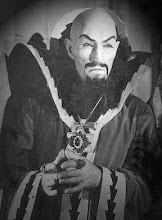Ming may have gotten that phrase backwards, but he nevertheless goes to his physician, Yu Tu Dum Tu Dy, complaining of recurring headaches. A Western doctor would immediately stuff him with pills, potions and panaceas, thus funding his next winter excursion to the Bahamas. Ming's doctor follows the Nei-Jing published in the third century B.C. and is known in the West as The Yellow Emperor's Classics of Internal Medicine. It is based on common experience over milleniums and uses herbals, acupuncture, manipulative therapy and food cures. For instance, back then, the Chinese already knew that their seamen could avoid scurvy by drinking tea, yet not until 1937 when Dr. Albert-Szent-Gyorgyi successfully isolated vitamin C as the cure was Western science satisfied. Their skeptical attitude towards common experience tells them nothing is true until they understand the method of action. They know that 100 grams of raw celery contains 17 calories, 0.9g of protein, 3.9g of carbohydrate, 39mg of calcium and 9mg of ascorbic acid but so what? The Chinese have used celery to reduce blood pressure for centuries but if no research has been done, Western scientists find that of little interest. The same with immunotherapies that like Chinese medicine, relies on the patient's internal defenses. They don't care if it works if you can't satisfy their tests. As for Ming's headaches, Yu knew it was due to pushing down too hard on the propeller when Ming puts on his beanie.
Feb 26, 2008
Subscribe to:
Post Comments (Atom)










No comments:
Post a Comment